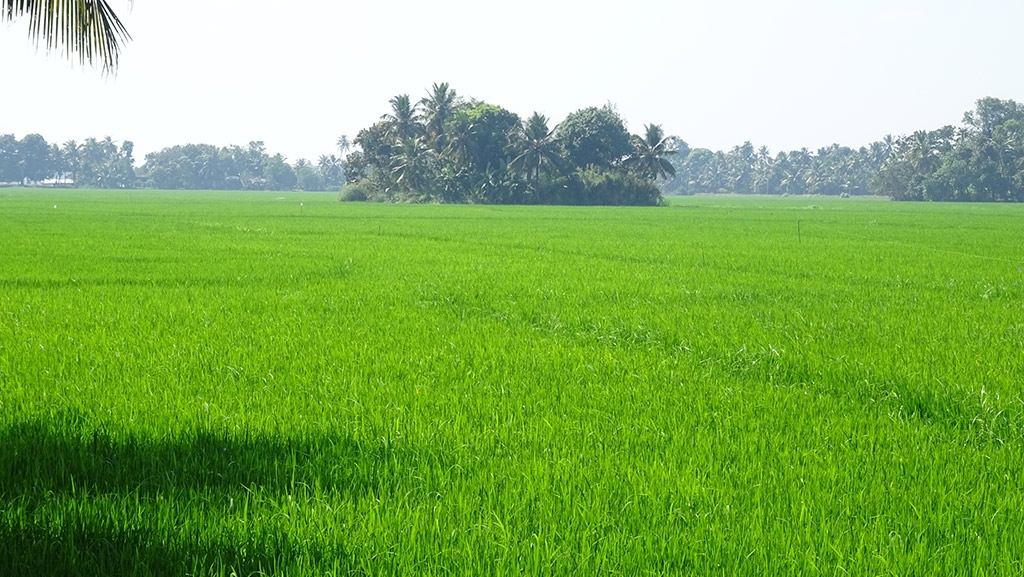Envis Centre, Ministry of Environment & Forest, Govt. of India
Printed Date: Friday, April 19, 2024
Agriculture

Kerala, with its diverse topographic, climatic and soil features is conducive to diversified cropping pattern comprising cash crops, food crops and plantation crops. The sector has witnessed significant changes over the years, such as transformation from food crops to non-food crops. Over the last two decades, the share of non-agricultural area (including cultivable wasteland and fallow land other than the current fallow) in the total geographical area of the State has increased considerably. There has also been a decline in land holdings’ average size to 0.18ha (Agriculture Census 2015-16).
Trends in Agricultural Income in Kerala
The agriculture sector has a significant role in the development process. It influences on employment generation, food security, supply of raw materials and livelihood generation and imparts resilience to the rural economy. The agriculture sector continues to be the primary source of livelihood in the State. The diverse agro-climatic conditions prevailing in the State favour the cultivation of a variety of crops, including plantation crops, cash crops, spices and food crops.
Poor annual growth rate in the sector has been one of the challenges in the last decade. The approach to the 14th Five Year Plan on enhancing productivity of crops in agriculture and intensification for the revival of agricultural growth rates in the State. As a measure to mitigate climate change related problems and to reduce the risk of production decline, the agricultural development programmes of the State have been oriented to a farm plan based development approach, giving thrust to integrated farming systems. The State is on the path of group activities in production, value addition, and services through collectives of farmers.
In order to keep in pace with the recent advances in the sector globally, Kerala’s agriculture needs to embrace new technologies, particularly in biotechnology and nanotechnology. Youth should be attracted to agriculture by making it economically rewarding and intellectually stimulating. Production and marketing must be restructured, and interventions in marketing must use the strengths of the State’s cooperative sector. A strong crop specific value chain needs to be developed to strengthen agriculture and farmers income.
Gross Value Added in Agriculture
The share of agriculture and allied sectors in the country’s total GVA has been declining in the last decade. Sector’s share in the Gross Value Added (GVA) of the country at constant prices has declined from 17.8 per cent in 2013-14 to 15.1 per cent (P) in 2022-23. The sectors share in total GSVA (at constant 2011-12 prices) of the State declined to 8.52 per cent in 2022-23 (QE), compared to 8.97 (P) per cent in 2021-22 (Table 3.1.1).
(Table 3.1.1) Share of agriculture and allied sectors in GVA/GSVA National and State level, constant prices 2013-14 to 2022-23
|
Year
|
Share of Agriculture and allied sectors in Total GVA (India) (%)
|
Share of Agriculture and allied sectors in GSVA Kerala) (%)
|
|
2013-14
|
17.8
|
12.37
|
|
2014-15
|
16.5
|
11.92
|
|
2015-16
|
15.4
|
10.74
|
|
2016-17
|
15.2
|
9.96
|
|
2017-18
|
15.3
|
9.61
|
|
2018-19
|
14.8
|
9.03
|
|
2019-20
|
15.1
|
8.55
|
|
2020-21
|
16.4
|
9.64
|
|
2021-22
|
15.6
|
8.97 (P)
|
| 2022-23 |
15.1(P) |
8.52(Q) |
Note: (P) Provisional, (Q) Quick
Source: National Accounts Statistics 2023, GoI; Directorate of Economics and Statistics, GoK
Trends in Growth Rate
As per the provisional estimates of national income, the share of agriculture and allied sectors to GVA of the country declined to 15.1 (P) per cent. in 2022-23 as compared to 15.6 per cent recorded in 2021-22.
The annual growth rate (GSVA at constant 2011-12 prices) of agriculture and allied activities (including crops, livestock, forestry and logging and fishing and aquaculture has been fluctuating over the years. In 2021-22, growth rate of agriculture and allied activities was 4.91(P) per cent. In 2022-23, it declined to 0.87 (Q) per cent (Table 3.1.2). The growth in crop sector was 0.74 per cent compared to 3.67 per cent in 2021-22 (Department of Economics and Statistics 2023, GoK).
(Table 3.1.2) Growth rate in Gross Value Added (GVA) in Agriculture and Allied Sectors in Kerala 2013-14 to 2022-23
|
Year
|
Growth rate per annum in Kerala (%)
|
|
2013-14
|
- 6.3
|
|
2014-15
|
0.02
|
|
2015-16
|
- 5.1
|
|
2016-17
|
-0.65
|
|
2017-18
|
2.1
|
|
2018-19
|
-2.09
|
|
2019-20
|
-2.56
|
|
2020-21
|
1.58
|
| 2021-22 |
4.91 (P)
|
|
| 2022-23 |
0.87 (Q)
|
|
|
Source: National Accounts Statisctics 2023 & DES, Kerala
Note: (P) Provisional, (Q) Quick
|
Source:
(1)Economic Review 2010-2023
(2)Directorate of Fisheries
(3) Livestock census report/animal husbandry department
(4) Directorate of Economics and Statistics